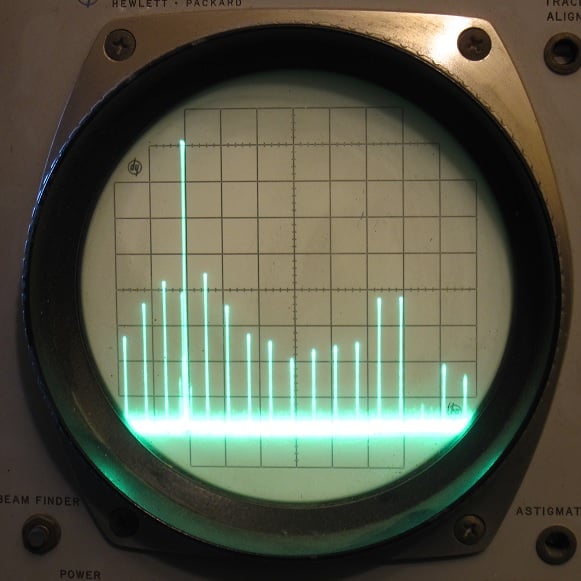cpu: Intel® Core™ i7-7500U CPU @ 2.70GHz, version: 6.142.9, size: 3268MHz, capacity: 3500MHz, width: 64 bits
also, if you could link a reliable guide for a newbie and your personal tricks to apply…
Most thermal pastes are about equal in effectiveness so stick with any name brand and you should be good.
For application I typically clean both the CPU’s heatspreader and cooler contact point with alcohol then squeeze out about a small pea sized amount of paste on the center of the heatspreader then let the mount force of the cooler spread it.
If you can afford it, Honeywell PTM7950. It’s very stable and avoids pump out, which is great in a laptop where you don’t want to repaste very often. It’s a phase change material, not a standard paste. To apply, put it the fridge to cool. Afterwards, cut to size and put it on. Once it warms up, it liquefies to fill all the small gaps.
Otherwise, most other pastes are fine. I’m partial to Arctic MX-4 but they’re all pretty the similar. On direct die like a mobile chip I would recommend spreading it out to ensure even coverage as gaps can cause hotspots which may eventually damage the chip.
Thermal Grizzly Kryonaut has worked well for me. A quick Google search shows a standard AMD AM5 CPU IHS is 32×32mm, and the normal recommendation for that is a pea sized dot in the center. Given that you’re talking about a laptop CPU, the exposed die will be significantly smaller. A delidded i7-8700k, for instance, is 9.2x16.7mm, which is only 15% of the area, so you would use roughly 15% of a pea of thermal paste for that die size. Granted, I don’t know the actual die size of an i7-7500U, so take that with a grain of salt.
Here is an iFixIt guide on how to repaste a laptop. Do not forget to remove the old thermal paste (and do so with a lint free cloth)! They recommend using an amount of thermal paste the size of a grain of rice. That seems a little small to me, but then again, I only paste desktop processors. I expect someone else here may have more experience with laptops.
I would recommend anything Thermal Grizzly: https://www.thermal-grizzly.com/
Simply because the owner has two 1 hour long videos explaining how its made and tested and it actually seems to be one of the best.
Just get a thick thermal paste. By and large any thermal paste is an improvement over stock. Thicker pastes like arctic mx6 won’t pump out. I like ic diamond 7 karat but that’s out of stock. (all I have left is a random tube of it that I found in storage)
(I do mean any thernal paste is better than stock. I used arctic ceramique 3 once on my i5-7200u laptop and it was still 3C lower than og psste temps)
When I repasted my i5-1135G7 laptop, I dropped 10C after replacing the paste.
All you really need is a tiny blob, one covering the igpu die, other on the cpu.
deleted by creator
Seconded
It is a somewhat old-fashioned choice these days, but Arctic Silver 5 paste is still my go-to. It is very thick and not prone to pump-out or dry-out. I have systems that I have taken apart where the paste was still tacky a good 5-6 years later. I think some modern pastes are a degree or two cooler, but for a 15W U-series CPU I do not think that is as much of a concern.
Most tutorials online will be for desktop CPUs and will tell you to put a pea-sized bead in the center and press down, but this is more suitable for desktop CPUs with an integrated heat spreader and not laptop CPUs, which are typically direct die application and would probably either leave a ton of excess paste from a pea-sized dot, or risk an exposed corner for a smaller dot.
For direct die, I would suggest spreading an even layer of paste from edge to edge of the die using the edge of an old credit card or the like. You want to avoid stirring up the paste too much in order to avoid introducing air bubbles which could cause localized hot spots on the die.
Thermal paste is all the same. Anything marketing different is just marketing.
The paste doesn’t help dissipate heat, just act as a conduit to do so. If you’re in a laptop, you’re stuck with what fits.
Caveat, any reputable brand of thermal paste is basically the same. I’ve experienced many cheapo brands, especially stuff included with cheapo hardware, that had texture issues or nearly liquefied at high temperatures and made a mess. Also, had one that evaporated partly and tested positive for lead, so not the most healthy. Though one time is not a big deal, it is a big deal if you used it a lot.
Anyway, stick to reputable brands and most are the same. Slight differences are usually in max temperature, but that doesn’t really apply to computer hardware much, but does affect some other moderately high temperature hardware that needs even cooling that I work with, like 3D printing.
in a notebook? would you be willing to try something like a graphite pad?
Not tooth paste, everything else does, even peanut butter (for a while). For what’s best, there’s 2025’ rankings online, look there. But consider ease of use too (liquid metal are worst there) and if it is half a degree worth for you.
Mobile CPUs (any any direct-die cooling for that matter) are more prone to pump-out, where the chip and heatsink expand at different rates with temperature changes, and the varying gap between the two creates a pumping action. It’s best to use a thicker paste to avoid it, or even better, a thermal pad. Not that it’s the best in the long run, but I have gotten away with the thinner MX-4 in my laptop for about a year.
If you have maybe $30 to spare, consider buying some PTM 7950 since it’s second only to liquid metal (very hard to get right), and should be good for many years. Be sure to get it from reputable sellers though since there are fakes for PTM 7950.
Halnziye HY-P15
https://www.halnziye.net/xinpin1/891.html
- Thermal conductivity is the key. Most brands don’t mention it




